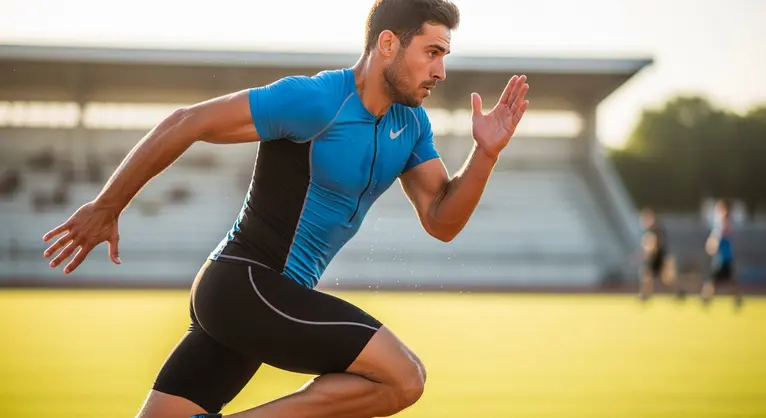By GymPulse Lead Trainer & Content Expert
Staying active is one of life’s greatest joys, but even the most passionate fitness enthusiasts risk running into injuries. Whether you’re a beginner finding your stride, or a seasoned athlete prepping for the next grassroots festival, smart recovery and thoughtful prevention make all the difference. Let’s explore practical, evidence-based strategies so you can play hard, recover fast, and return feeling stronger.
Injury Prevention: Practical Strategies for Every Athlete
Most exercise-related injuries are preventable. By following some smart training habits, you can dramatically reduce your risk—no matter your sport or experience level.
Warm-Up and Cool-Down: Your Secret Edge
A solid warm-up gets your blood pumping and prepares your muscles for action. Think 10 minutes of dynamic stretching—arm circles, leg swings, light jogging—before you go all out. Afterward, cool down with gentle, static stretches. This helps muscles relax and reduces next-day soreness.
Improve Your Technique & Progress Gradually
Practicing correct form protects your body from unnecessary strain. If you’re unsure, ask a coach or buddy to check your movements. Also, increase your practice intensity or time by no more than 10% weekly. Your muscles and joints need time to adapt!
Gear Up: Equipment and Strength Tips
The right gear matters. Wear sport-specific shoes and any necessary pads or braces—they’re your first line of defense. Add strength training to your routine 2–3 times a week, focusing on core, knees, and ankles. Simple balance exercises, like standing on one leg or using a wobble board, can greatly lower your risk of sprains and falls.
Don’t Forget Hydration and Flexibility
Hydrated muscles work better and are less likely to cramp. Drink water before, during, and after activity—especially if you sweat heavily. Keep your muscles supple with regular stretching, aiming for every major group two or three times a week.
Smart Recovery for All Levels
Even with the best prep, setbacks can happen. Knowing how to recover correctly ensures you’re back on your feet as quickly and safely as possible.
Rest, RICE, and Return-to-Play Principles
At the first sign of sharp or unusual pain, stop and rest. For minor sprains or strains, the classic RICE method works well: Rest, Ice, Compression, and Elevation. Don’t rush your comeback—use a stepwise approach, increasing activity only when pain and swelling subside. Tools like the StaRRt framework help you monitor readiness to return.
Recovery Tools and Monitoring Progress
Foam rollers and massage sticks are affordable ways to ease soreness and improve blood flow. Compression sleeves and muscle stimulators can aid recovery too. If pain lingers, or you notice swelling, bruising, or difficulty moving, reach out to a healthcare pro. For a complete guide on managing your healing process, check out our injury recovery checklist.
Nutrition to Accelerate Healing
Food is fuel—especially when your body is repairing!
Key Nutrients for Muscle and Tissue Repair
Protein is your best friend (think 1.2–2.0g per kg of body weight daily). Lean meats, dairy, beans, and nuts speed muscle recovery. Collagen (from bone broth or supplements) and Vitamin C (from citrus, peppers, and greens) help heal tendons and ligaments.
Anti-Inflammatory Foods and Staying Hydrated
Add omega-3-rich foods like salmon, walnuts, and chia seeds. Colorful berries and leafy greens deliver antioxidants that help soothe inflammation. Stay hydrated with water; for long or sweaty sessions, an electrolyte drink can prevent cramps and fatigue. For deeper insights about antioxidants and their role in recovery and injury prevention, visit our post on antioxidants in sports nutrition.
Psychology: Staying Motivated During Recovery
Healing isn’t just physical—it’s mental too. Staying positive keeps you on track.
Goal Setting and Visualization
Break your recovery into small, manageable goals, like walking a little more each day. Take a few minutes to picture yourself healthy and active—it really helps confidence! Learn more about the power of visualization for healing in our dedicated guide.
Community, Support, and Mindfulness
Keep in touch with your sports friends or join an online fitness group for encouragement. Simple mindfulness practices, like deep breathing or guided meditations, can ease frustration and boost resilience.
Final Thoughts: Your Best is Yet to Come
Remember, everyone’s recovery and prevention journey looks a little different—and that’s okay. Smart habits, a balanced diet, and a positive outlook can carry you through setbacks and on to new personal bests. Have questions or a recovery tip to share? Drop your story in the comments—we’re cheering you on every step of the way!
Written by the GymPulse Lead Trainer
(Evidence-based, practical advice from a decade of coaching and sports science expertise. Visit our About page to meet our team and see more recovery resources.)
Stay strong, play safe, and enjoy every moment of your active life!

